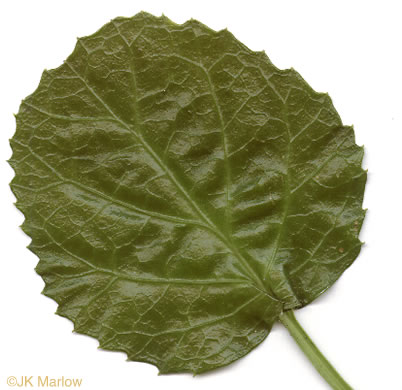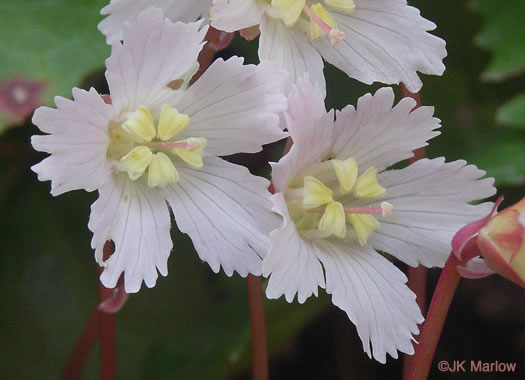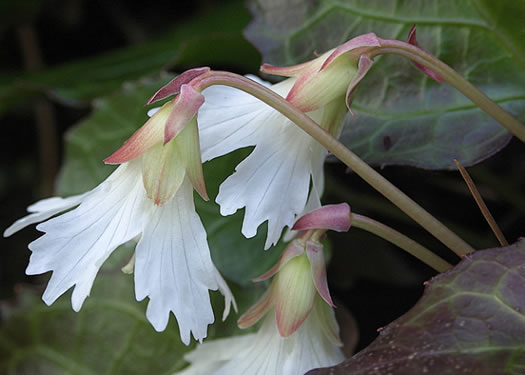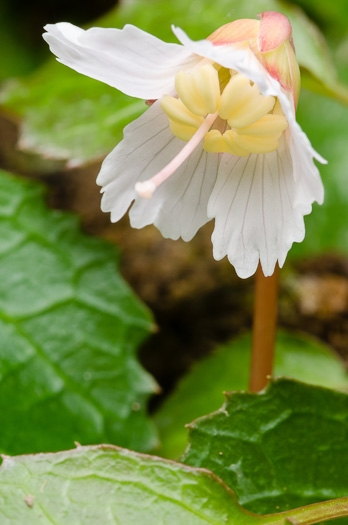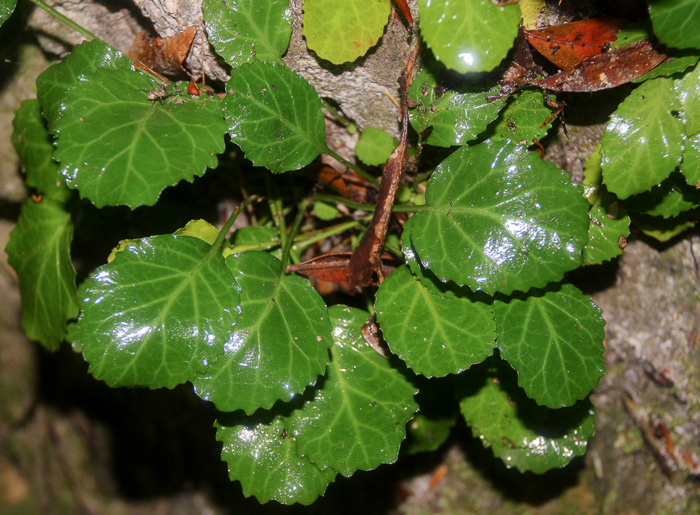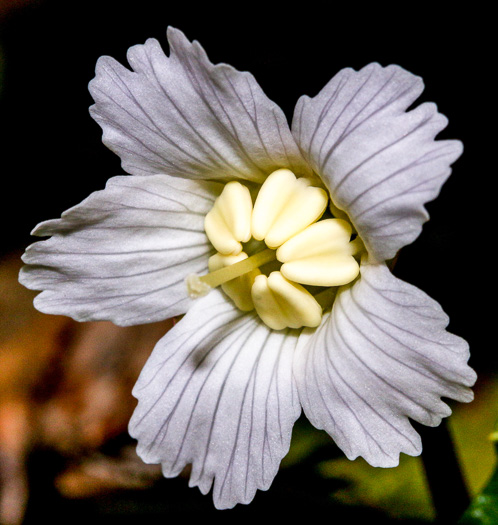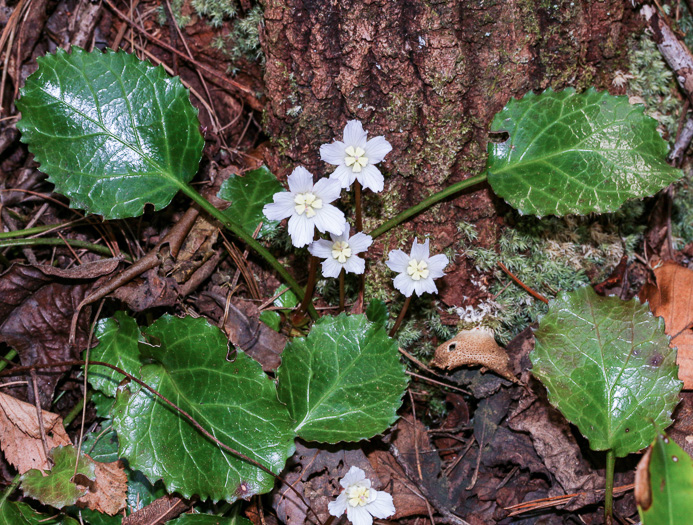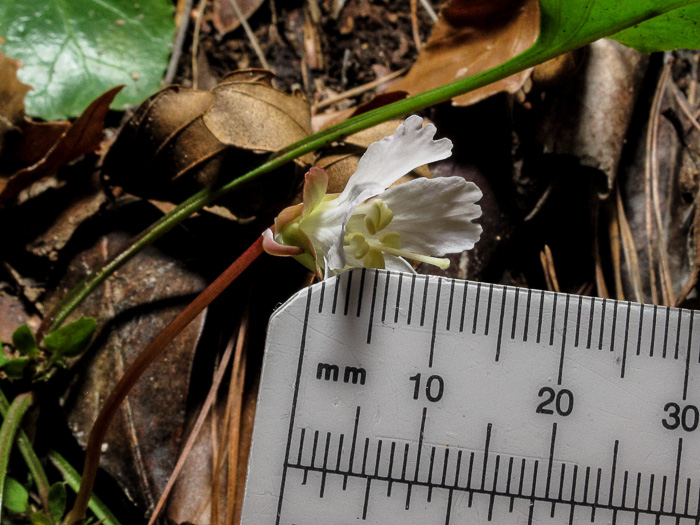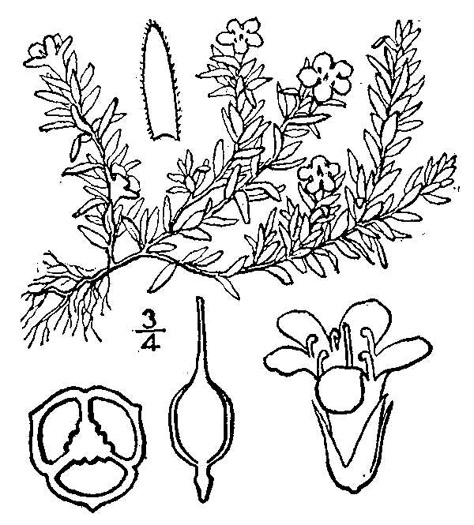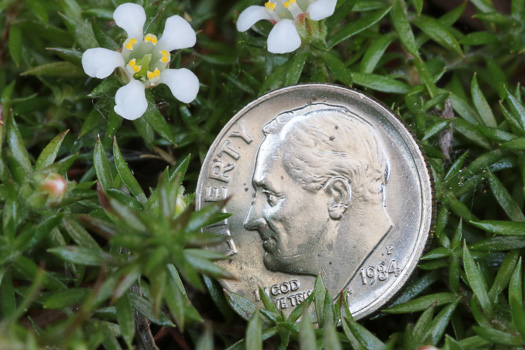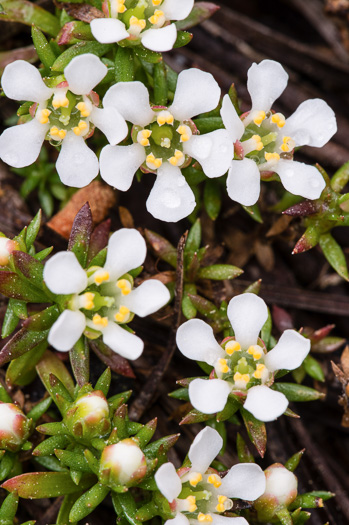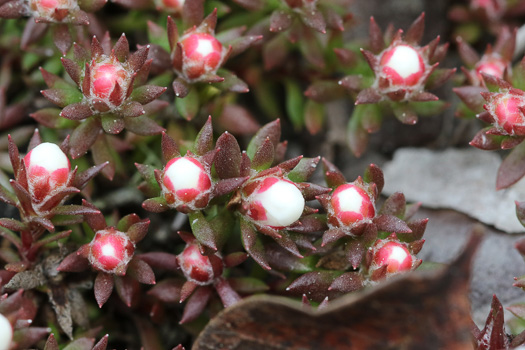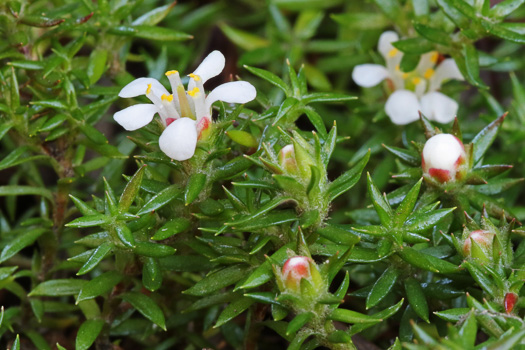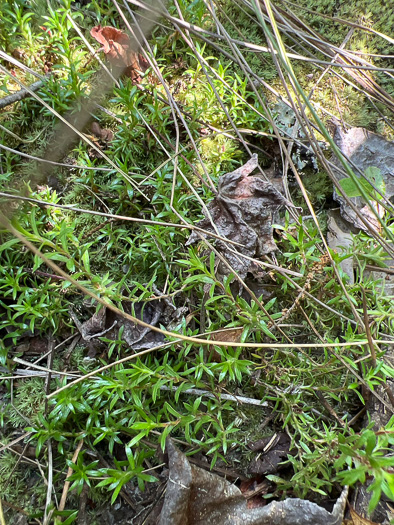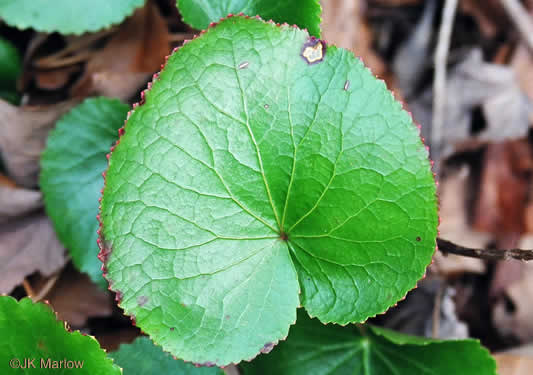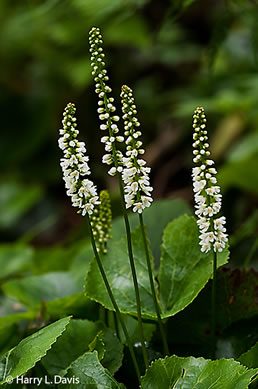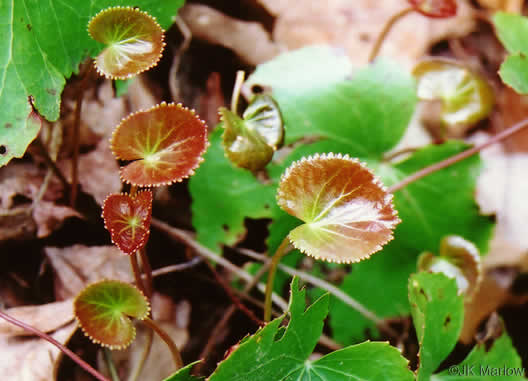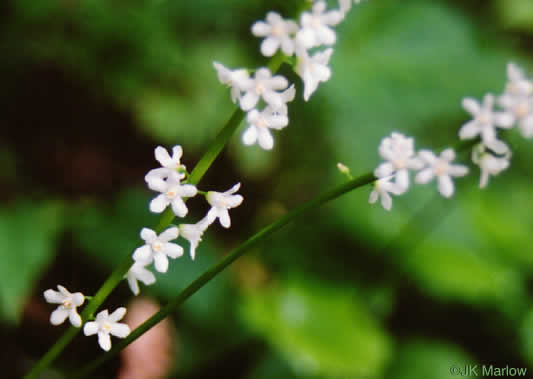Hovering over an image will enlarge it and point out features (works better on desktop than on mobile).
![]() A camera indicates there are pictures.
A camera indicates there are pictures.
![]() A speaker indicates that a botanical name is pronounced.
A speaker indicates that a botanical name is pronounced.
![]() A plus sign after a Latin name indicates that the species is further divided into varieties or subspecies.
A plus sign after a Latin name indicates that the species is further divided into varieties or subspecies.
Most habitat and range descriptions were obtained from Weakley's Flora.
Your search found 5 taxa in the family Diapensiaceae, Diapensia family, as understood by PLANTS National Database.

![]()
![]() Common Name:
Oconee Bells, Southern Shortia
Common Name:
Oconee Bells, Southern Shortia
Weakley's Flora: (4/14/23) Shortia galacifolia FAMILY: Diapensiaceae
SYNONYMOUS WITH PLANTS National Database: Shortia galacifolia var. galacifolia FAMILY: Diapensiaceae
INCLUDED WITHIN Vascular Flora of the Carolinas (Radford, Ahles, & Bell, 1968): Shortia galacifolia 146-01-001 FAMILY: Diapensiaceae
Habitat: On moist slopes, creekbanks, and rock outcrops in humid escarpment gorges with high rainfall, generally in deep shade under Rhododendron maximum and R. minus, at elevations (in NC) of 350-650m
Rare in Mountains (waifs elsewhere in GA-NC-SC, where escaped from cultivation)
Native to the Carolinas & Georgia

![]() Common Name:
Northern Shortia, Northern Oconee Bells
Common Name:
Northern Shortia, Northern Oconee Bells
Weakley's Flora: (4/14/23) Shortia brevistyla FAMILY: Diapensiaceae
SYNONYMOUS WITH PLANTS National Database: Shortia galacifolia var. brevistyla FAMILY: Diapensiaceae
INCLUDED WITHIN Vascular Flora of the Carolinas (Radford, Ahles, & Bell, 1968): Shortia galacifolia 146-01-001? FAMILY: Diapensiaceae
Habitat: On moist slopes, creekbanks, and rock outcrops in humid escarpment gorges with high rainfall, generally in deep shade under Rhododendron maximum, at elevations of 350-550m
Rare
Native to North Carolina

![]() Common Name:
Flowering Pyxie-moss, Big Pyxie, Savanna Pyxiemoss
Common Name:
Flowering Pyxie-moss, Big Pyxie, Savanna Pyxiemoss
Weakley's Flora: (4/24/22) Pyxidanthera barbulata var. barbulata FAMILY: Diapensiaceae
SYNONYMOUS WITH PLANTS National Database: Pyxidanthera barbulata FAMILY: Diapensiaceae
SYNONYMOUS WITH Vascular Flora of the Carolinas (Radford, Ahles, & Bell, 1968): Pyxidanthera barbulata var. barbulata 146-02-001a FAMILY: Diapensiaceae
Habitat: Pine savannas, pine flatwoods, pocosin margins, edges of sandhill seepage bogs, primarily in mesic to hydric sites, in wet sands and peaty sands, occasionally extending to submesic sands, but generally with a permanently or seasonally high water table, often with Sphagnum
Common in NC Coastal Plain, rare in SC
Native to the Carolinas

![]() Common Name:
Sandhills Pyxie-moss, Wells' Pyxie-moss, Little Pyxie
Common Name:
Sandhills Pyxie-moss, Wells' Pyxie-moss, Little Pyxie
Weakley's Flora: (4/24/22) Pyxidanthera barbulata var. brevifolia FAMILY: Diapensiaceae
SYNONYMOUS WITH PLANTS National Database: Pyxidanthera brevifolia FAMILY: Diapensiaceae
SYNONYMOUS WITH Vascular Flora of the Carolinas (Radford, Ahles, & Bell, 1968): Pyxidanthera barbulata var. brevifolia 146-02-001b FAMILY: Diapensiaceae
Habitat: On xeric sandhills, generally over deep sand or sand-clay mixtures near the summits or on the upper slopes of sandhills, restricted to the Fall-line Sandhills region
Rare (endemic to 6 counties of the Carolina Sandhills)
Native to the Carolinas

![]()
![]() Common Name:
Galax, Beetleweed
Common Name:
Galax, Beetleweed
Weakley's Flora: (4/24/22) Galax urceolata FAMILY: Diapensiaceae
SYNONYMOUS WITH PLANTS National Database: Galax urceolata FAMILY: Diapensiaceae
SYNONYMOUS WITH (MISAPPLIED) Vascular Flora of the Carolinas (Radford, Ahles, & Bell, 1968): Galax aphylla 146-03-001 FAMILY: Diapensiaceae
Habitat: Mountain forests, rock outcrops, nearly ubiquitous in the Mountains, more restricted in habitat elsewhere, moist to dry slopes in the Piedmont and Coastal Plain, often associated with Kalmia latifolia or Rhododendron maximum
Common (uncommon in Carolina Coastal Plain) (rare in GA Coastal Plain)
Native to the Carolinas & Georgia
Your search found 5 taxa. You are on page PAGE 1 out of 1 pages.


